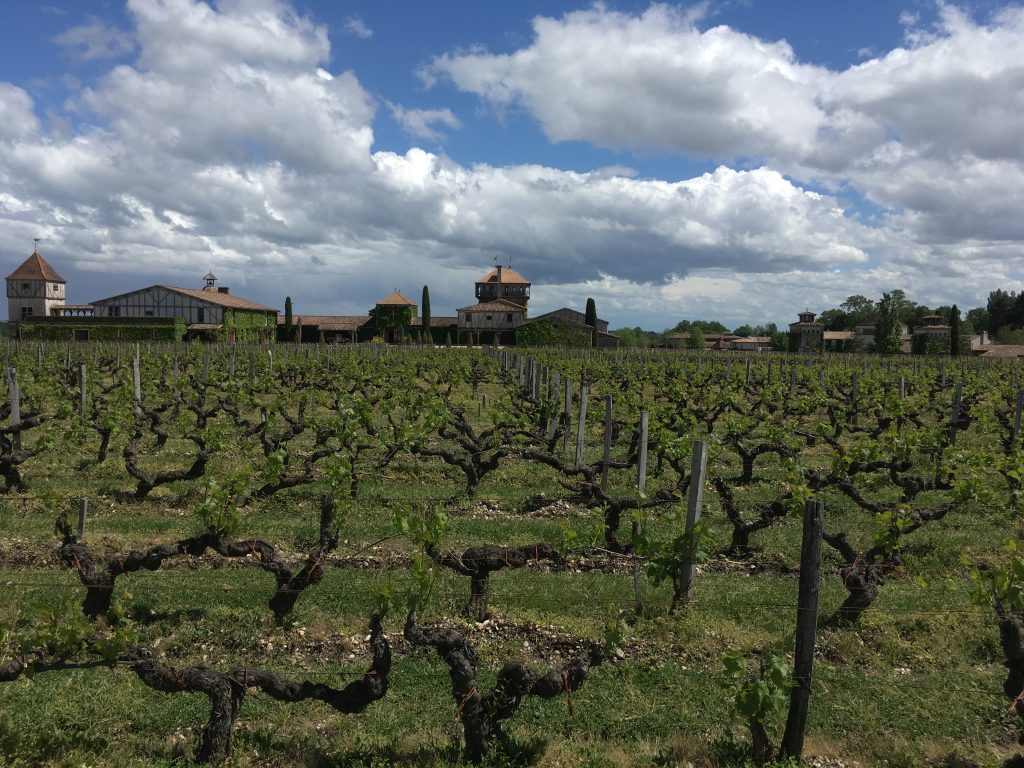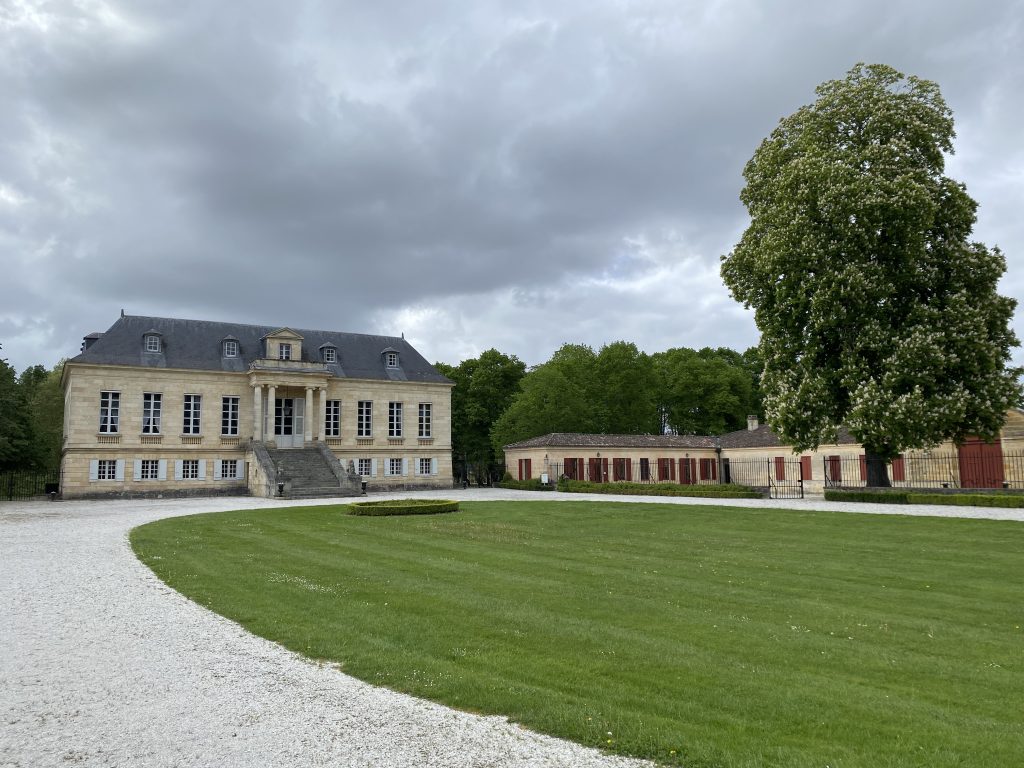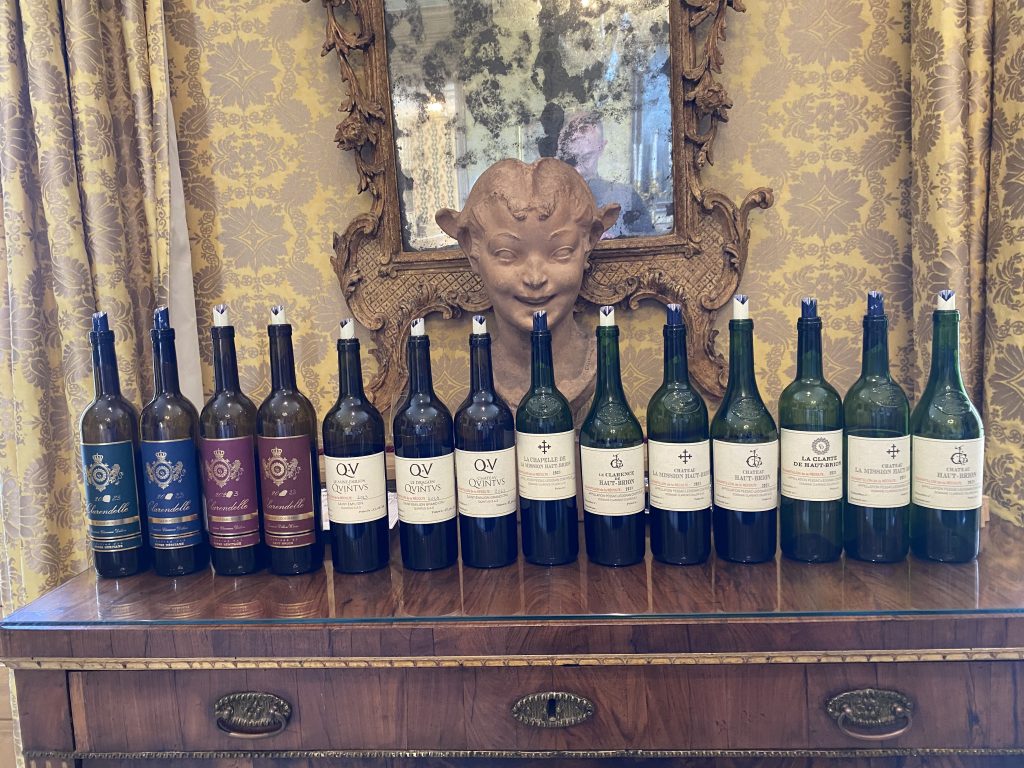This website uses cookies so that we can provide you with the best user experience possible. Cookie information is stored in your browser and performs functions such as recognising you when you return to our website and helping our team to understand which sections of the website you find most interesting and useful.
Pessac-Léognan (rouge) 2023: some exceptional wines among ‘uneven’ reds
Continuing to Pessac-Léognan, db’s Bordeaux correspondent Colin Hay finds the appellation suffered greater mildew pressure than any other – especially for the Merlot. The losses resulted in some uneven reds and Cabernet-dominant blends, although some wines managed to transcend the challenging weather.

On a good day it’s about 45 minutes from Pomerol to Léognan, though it can easily take twice as long when Bordeaux’s infamous la Rocade is busy. But since en primeur week falls in the second week of the Bordeaux school holidays, we get there relatively quickly.
We arrive here in a rather different vinous universe, with larger properties, a typically more even balance between Cabernet and Merlot in the vineyard amongst the reds and a rather greater presence of white varietals (though the whites, to which we will return presently, still represent less than 15% of the total production of the appellation). We’re also further from large bodies of water (the Atlantic Ocean and the Gironde estuary), with a somewhat greater exposure to summer spikes in temperature and, indeed, frost in the spring.
Yet a quick look at the meteorological details of the 2023 growing season immediately suggests some similarities with Pomerol and Saint Émilion – certainly rather more so than with the leading left-bank appellations of the Médoc.
|
Pre-budburst (Nov-March) |
Budburst to Harvest (April-mid October) |
Total (1/11-15/10) |
|
| Pessac-Léognan | 426 (-12.4%) | 469.4 (+14.5%) | 895.2 (0%) |
| Margaux | 398 (-19.3%) | 464.6 (+11.0%) | 862.6 (-5.7%) |
| St Julien | 458 (-5.8%) | 441.3 (+13.3%) | 899.2 (+1.2%) |
| Pauillac | 458 (-5.8%) | 441.3 (+13.2%) | 899.2 (+1.2%) |
| St-Estèphe | 550.7 (+3.0%) | 411.8 (+4.7%) | 912.5 (+1.5%) |
| Saint Émilion | 306 (-37.1%) | 490.8 (+18.1%) | 796.8 (-11.8%) |
| Pomerol | 338 (-31.5%) | 470.0 (+14.5%) | 808.1 (-10.9%) |
Table 1: Rainfall during the vintage (relative to 10-year average)
Source: calculated from Saturnalia’s Bordeaux 2023 Harvest report
As Table 1 suggests, it was particularly wet here between budburst and harvest, with rainfall accumulations up nearly 15% on the 10-year average and with that rain, as throughout the region, highly concentrated in the months of June and September.
Here again it was the June rainfall, book-ended as it was by spikes in already above average temperatures, that was the problem. Or, rather, it was the catalyst for the problem – mildew. Here Pessac suffered more that any of the other leading appellations, with the partial exception of Saint Émilion (partial because in Saint Émilion it was only really the somewhat lesser terroirs of the appellation in the south and west towards the river that were ravaged).

Pessac is the only leading appellation in which a classified growth produced not a single bottle of grand vin in 2023. That property, alas, is Bouscaut (and the excellence of its white, to which I will return in a later article, is likely to prove little consolation). But Bouscaut was hardly alone in its suffering, with many of the leading estates in that part of the appellation (above all those south of a line joining Couhins Lurton and Olivier) suffering significant losses. Indeed, one of the distinguishing features of the vintage in Pessac-Léognan is that mildew did not spare the leading properties, with Domaine de Chevalier (30 hl/ha), Larrivet Haut-Brion (35 hl/ha), Latour Martillac (33 hl/ha), Pape Clément (35 hl/ha) and Smith Haut Lafitte (26 hl/ha) all returning yields well below the (already below average) vineyard yield for the appellation. Amongst the leading appellations, only Margaux came close to suffering a similar fate.
| 2019 | 2020 | 2021 | 2022 | 2023 | 10-year average | Relative to 10-year average (% change) | |
| Pessac-Léognan rouge | 47.2 | 34.6 | 30.7 | 35.7 | 38.1 | 38.5 | -1.0 |
| Margaux | 49.2 | 36.3 | 38.6 | 31.3 | 37.7 | 39.7 | -5.0 |
| St Julien | 45.5 | 34.3 | 35.2 | 34.3 | 50.3 | 40.1 | +25.4 |
| Pauillac | 46.7 | 37.4 | 35.1 | 34.8 | 47.1 | 39.7 | +18.6 |
| St Estèphe | 49.7 | 41.2 | 40.7 | 31.5 | 51.6 | 43.4 | +18.9 |
| St Emilion (GC) | 43.0 | 36.7 | 27.5 | 41.2 | 40.5 | 37.2 | +8.9 |
| Pomerol | 43.0 | 39.8 | 28.9 | 32.3 | 45.2 | 36.1 | +25.2 |
Table 2: Average vineyard yield by appellation (hl/ha)
Source: calculated from Duanes data compiled by the CIVB Service Economie et Etudes
As this already suggests, the average appellation yields displayed in Table 2 tell only part of the story. But what they do show is that, along with Margaux, Pessac-Léognan was the only leading appellation of the left or right-bank to return below average aggregate vineyard yields – and for the fourth consecutive year in a row. That final statistic is a significant cause for concern, raising at it does questions about the general productivity of the appellation in a context of dérèglement climatique (or ‘climate weirding’, the point being that this is not just about global warming).
It is unsurprising, given all of this, that the (red) wines of the appellation are somewhat uneven in this vintage (we will return to the whites presently, but the story there is subtly different and rather more positive).
That is not at all to say that there are not great wines here. There are. But they are often unusual in their composition, as we shall see; and, perhaps more significantly, the qualitative gradient is steep as one descends from the small high plateau at the top.
As Table 3 shows, the meteorological challenges of the growing season have had quite a significant bearing on the final blends of the leading wines. Indeed, this is true even for properties, like Carmes Haut-Brion and Haut Bailly, where final vineyard yields were above the appellation average. In these cases the high proportion of Cabernet in the grand vin was largely a question of choice, reflecting the relative excellence of the respective varietals at harvest.
But for most of the others it is a more direct consequence of the significant losses suffered on Merlot plots from mildew exposure, in the first place, and the subsequent desiccation and burning of fruit on the vines which was more intense in plots that had already been exposed to mildew damage.
| % Merlot | % Cabernets |
Yield hl/ha |
|||||||
| 2020 | 2021 | 2022 | 2023 | 2020 | 2021 | 2022 | 2023 | ||
| Carmes Haut-Brion | 26 | 25 | 26 | 20 | 74 | 75 | 74 | 80 | 50 |
| Domaine de Chevalier | 27 | 10 | 30 | 25 | 67 | 85 | 67 | 70 | 30 |
| Haut Bailly | 42 | 22 | 37 | 34 | 55 | 68 | 58 | 62 | 40.5 |
| Larrivet Haut-Brion | 52 | 0 | 18 | 5 | 48 | 100 | 82 | 95 | 35 |
| Malartic-Lagravière | 48 | 32 | 43 | 42 | 52 | 68 | 54.5 | 54 | 39 |
| Pape Clément | 47 | 60 | 60 | 50 | 51 | 40 | 40 | 47 | 35 |
| Smith Haut-Lafitte | 30 | 33 | 32 | 23 | 69 | 66 | 64 | 76 | 26 |
| Average | 38.9 | 26.0 | 35.1 | 28.4 | 59.4 | 62.0 | 62.8 | 69.1 | 36.5 |
Table 3: Percentage of Merlot and Cabernet (Sauvignon + Franc), 2020-2023
To be fair, all of the wines listed in the above table are very strong, above all in the context of a challenging vintage. And some of them are truly exceptional. But in a vintage in which terroir typicity is generally high, low yields and more Cabernet-dominant blends have resulted in some wines that might seem just a little anomalous in vertical tastings a decade or so from now.
The wines themselves

Given all of this, it might seem strange that my top wines of the appellation are rated so highly. But, as I have argued before, this is something of a vintage of glass ceilings – above all on the right-bank and here again in Pessac-Léognan. And when it comes to glass ceilings there are always those who manage to transcend what holds back the rest.
That is most definitively the case for a truly magical and glass ceiling shattering Haut-Brion. But it is scarcely less true for Carmes Haut-Brion, even if one has the sense here that the transcendence has been achieved through a remarkable and now characteristic set of technical achievements that it would be difficult for anyone else to replicate. The proof is in the bottle. Both are profound wines. La Mission Haut-Brion is magical too, but very different from Haut-Brion itself – vibrant, vivid and energetic where its stablemate is calm, authoritative and supremely elegant.
Almost equally impressive, though in rather different ways, are Haut-Bailly and Smith Haut-Lafitte. The former is another technical triumph with the most gracious of tannins and a quite staggering form of plunge pool purity in the mid-palate that really sets it apart. The latter is archetypally Pessac (more accurately, perhaps, Martillac) in a vintage in which that is actually rather rare. It is smoky, gamey and uncompromisingly exuberant. Both are, in the end, exactly what you would hope them to be.
There are plenty of other successes in this vintage, as my more detailed tasting notes attest. But in the end, relatively few of them attain the glory of the 2020 or 2022 vintages.
Yet where Pessac-Léognan does excel, as ever, is in terms of sheer value for money. In two, albeit slightly different price brackets, it is difficult to beat the trio of C de Carmes Haut-Brion, Couhins Lurton and Latour Martillac on the one hand and La Louvière and Picque Caillou on the other. Each has negotiated the challenges of the vintage very well and it is difficult to think of wines anywhere in the region capable of offering more for less.
Highlights in 2023
Best of the appellation:
- Haut-Brion (97-99)
- Carmes Haut-Brion (96-98)
- La Mission Haut-Brion (96-98)
Truly great:
- Haut Bailly (95-97)
- Smith Haut-Lafitte (95-97)
- Domaine de Chevalier (94-96+)
- Pape Clément (94-96)
- Malartic-Lagravière (93-95)
Value picks:
- C de Carmes Haut-Brion (92-94+)
- Couhins-Lurton (92-94+)
- Latour Martillac (92-94+)
- La Louvière (91-93+)
- Picque Caillou (91-93)
See here for Colin’s full tasting notes for Pessac-Léognan and his appellation analysis for Margaux, St Julien, Pauillac, St Estèphe, Saint Émilion and Pomerol.
Read more:
A guide to Bordeaux 2023 in ten questions
Bordeaux 2023 vintage report part I: quality and quantity together, for once
Bordeaux vintage report part 2: a vintage of reactivity, vigilance and surveillance

